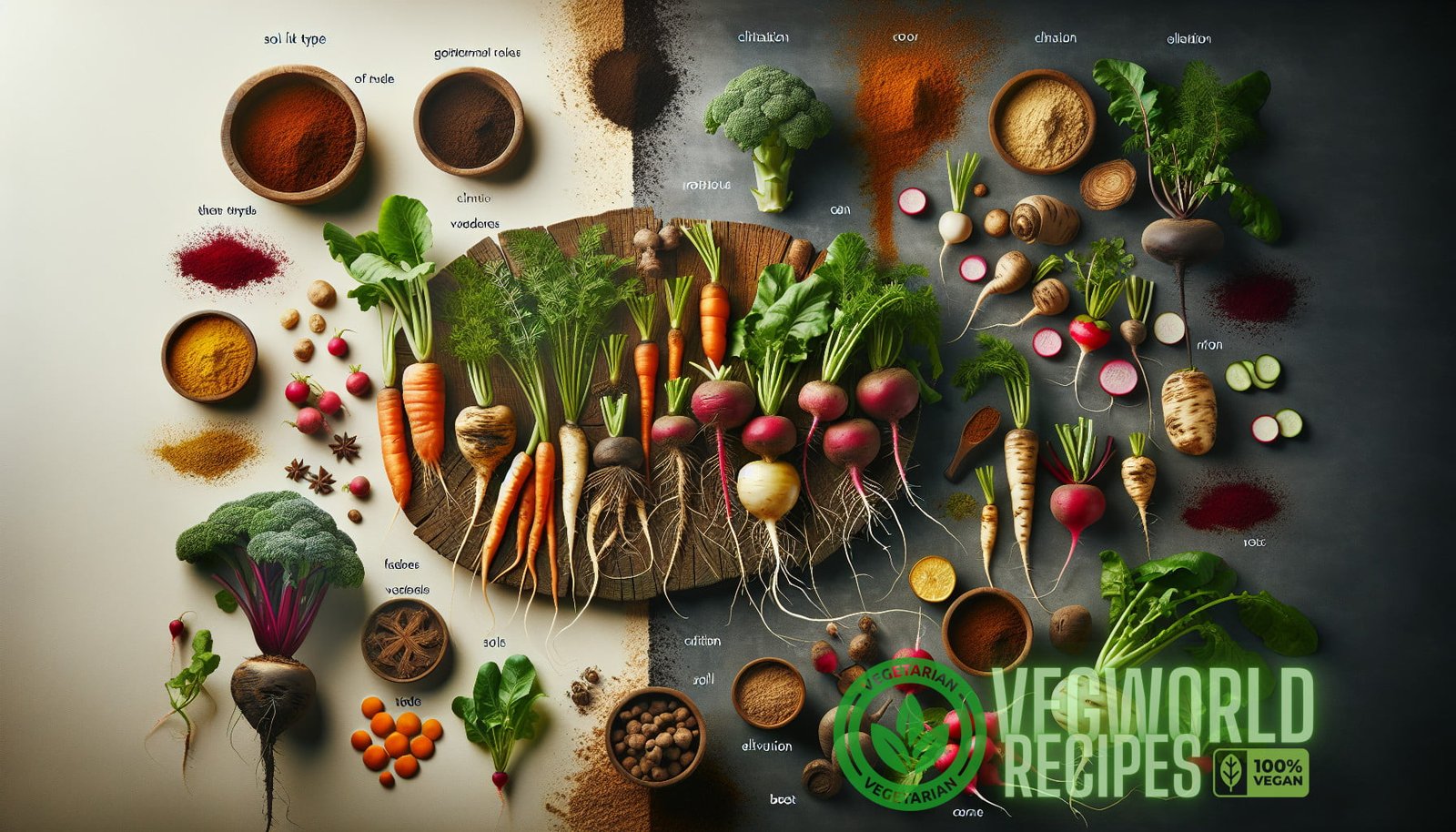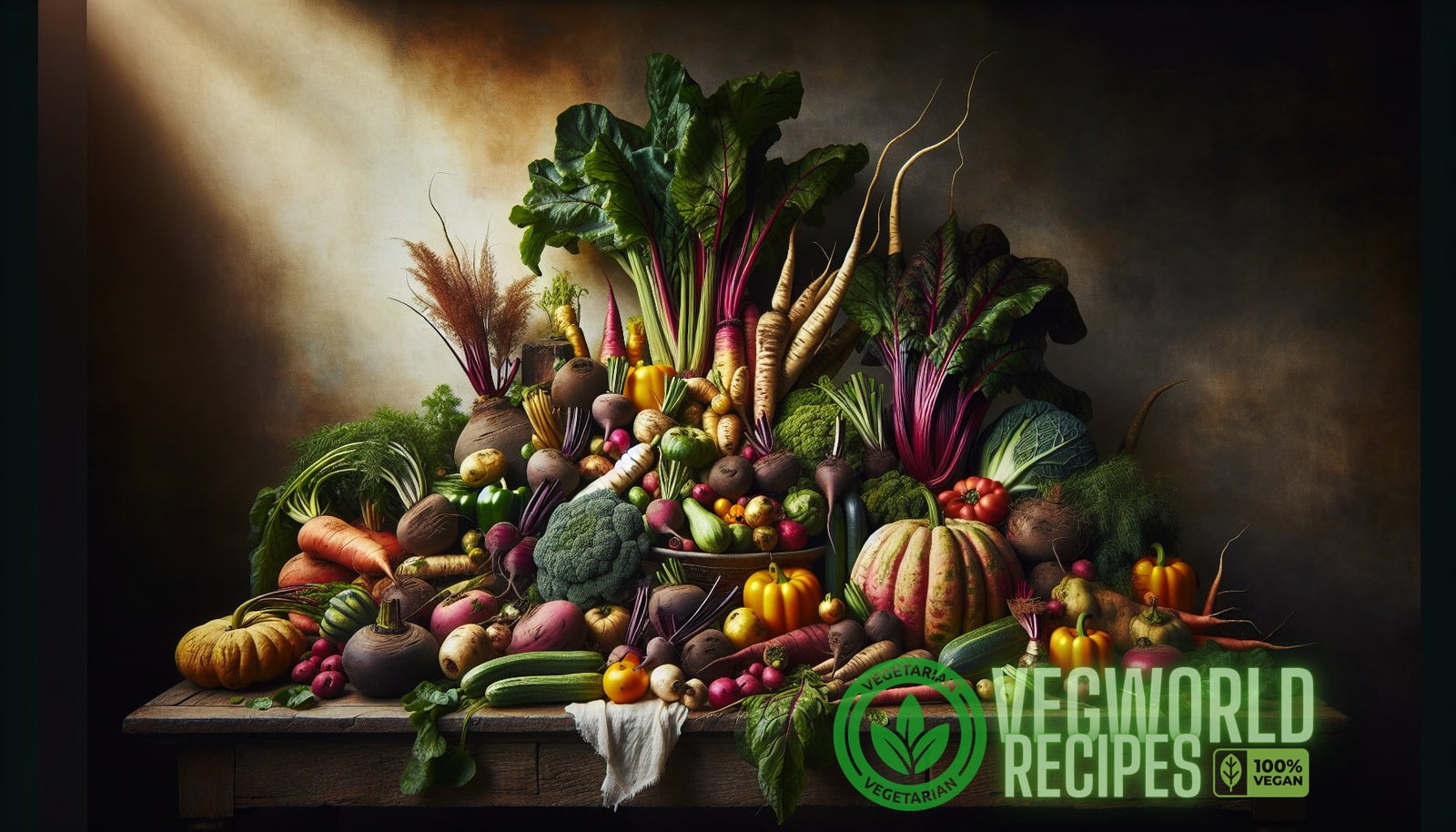Introduction
Seasonal vegetables are a treasure trove of vibrant flavors waiting to be unleashed in the kitchen. With their unique taste profiles and rich nutritional content, these vegetables provide a feast for the senses and a boost to our health. However, not all vegetables are created equal when it comes to flavor. Forgotten varieties, often overshadowed by their more popular counterparts, offer an opportunity to explore a whole new world of tastes. In this article, we will delve deep into the flavorful varieties of seasonal vegetables, uncovering their hidden potential and unlocking their captivating flavors.
Unearthing Forgotten Varieties
- The Importance of Seasonal Eating
- Rediscovering Heirloom Varieties
- Exploring Indigenous Vegetables
Seasonal eating has gained popularity in recent years, as people become more aware of the benefits of consuming food that is fresh and locally sourced. By eating vegetables that are in season, we not only support local farmers but also enjoy produce at its peak flavor and nutritional value. However, many seasonal vegetables that were once widely consumed have been forgotten or replaced by commercially popular varieties. By unearthing these forgotten varieties, we can rediscover their unique flavors and enrich our culinary experiences.
Heirloom varieties of vegetables are old, open-pollinated varieties that have been passed down through generations. These varieties have been carefully cultivated and selected for their exceptional taste and adaptability to specific regions. Heirloom vegetables often have distinct flavors that have been lost in modern hybrids, making them a valuable addition to any kitchen. By seeking out heirloom varieties, we can bring back the flavors of the past and add diversity to our recipes.
Indigenous vegetables, also known as traditional or native vegetables, are the crops that have been grown and consumed by indigenous communities for centuries. These vegetables are often well-adapted to local climates and are packed with unique flavors and nutrients. Rediscovering these indigenous vegetables not only helps preserve cultural heritage but also introduces us to a whole range of delicious and nutritious options.
By exploring these forgotten varieties, we can expand our culinary horizons, add depth to our dishes, and support biodiversity in agriculture.
Unlocking Flavor Profiles
- The Role of Genetics
- The Impact of Terroir
- Significance of Ripeness
The flavor of a vegetable is a complex interplay of factors such as genetics, environmental conditions, and ripeness. By understanding and harnessing these factors, we can unlock the full potential of the flavorful varieties we choose to cook with.
The genetic makeup of a vegetable plays a crucial role in determining its flavor profile. Different varieties of the same vegetable can have distinct flavors, ranging from sweet and mild to tangy and robust. Some vegetables, like tomatoes, have been extensively bred for specific flavor traits, resulting in a wide range of options with varying taste profiles. By selecting specific varieties that align with our desired flavor preferences, we can elevate the taste of our dishes.

Terroir refers to the environmental conditions, such as soil type, climate, and elevation, that influence the flavor of agricultural produce. Just like wine grapes, vegetables can acquire unique flavors and characteristics based on where and how they are grown. The same variety of vegetable grown in different regions can exhibit distinct taste profiles. For example, carrots grown in sandy soil may have a sweeter flavor, while those grown in clay soil may be more earthy. By sourcing vegetables from specific regions known for their exceptional flavors, we can enhance the taste of our dishes.
Ripeness is a critical factor in unlocking the full flavor potential of vegetables. Many vegetables are harvested before they are fully ripe to ensure longer shelf life and ease of transportation. However, this often results in a sacrifice of flavor. By allowing vegetables to fully ripen before consumption, we can experience the true depth and richness of their flavors. Farmers markets and local grocers often offer vegetables that are allowed to fully mature, providing an opportunity to savor their true taste.
The Flavorful Journey in the Kitchen
- Enhancing Flavors through Cooking Techniques
- Pairing Complementary Flavors
- Exploring Global Cuisine
Once we have identified and sourced the flavorful varieties of seasonal vegetables, it’s time to unleash their taste potential in the kitchen. Various cooking techniques and flavor pairings can take these vegetables to new heights, creating dishes that are a delight to the palate.
Certain cooking techniques can enhance the flavors of vegetables, bringing out their best qualities. Roasting vegetables, for example, caramelizes their natural sugars, intensifying their sweetness and creating a depth of flavor. Grilling imparts smoky notes, while sautéing in butter or olive oil adds richness. Steaming or lightly blanching vegetables can help retain their natural freshness and delicate flavors. By experimenting with different cooking techniques, we can uncover the unique tastes of each vegetable variety.
Pairing complementary flavors is a key strategy in creating delicious dishes. Some vegetables have natural affinities with particular seasonings or ingredients. For example, the sweetness of beets pairs well with tangy goat cheese, while the earthiness of mushrooms complements the richness of garlic. By exploring different flavor combinations, we can create harmonious and well-balanced dishes that highlight the flavors of each vegetable.
Global cuisine offers a wealth of inspiration when it comes to creating flavorful vegetable dishes. Each culture has its own unique ways of preparing and seasoning vegetables, resulting in an array of tantalizing flavors. From Indian curries to Italian pasta dishes, the possibilities are endless. By venturing into different culinary traditions, we can broaden our flavor repertoire and discover new and exciting ways to enjoy seasonal vegetables.
Conclusion
Unleashing the vibrant tastes of seasonal vegetables is a rewarding journey that takes us back to the roots of our culinary heritage. By unearthing forgotten varieties, understanding the factors that influence flavor, and exploring different cooking techniques and flavors, we can truly unlock the full potential of these flavorful gems. So let’s embark on this flavorful adventure, embracing the diversity of seasonal vegetables and savoring every bite.
For more information on unlocking the flavor profiles of seasonal vegetables, check out this article on Veg World Recipes.
Discover the impact of freshness on the nutritional power of seasonal vegetables in this article from Veg World Recipes.
Remember, by embracing the flavorful varieties of seasonal vegetables, we not only tantalize our taste buds but also nourish our bodies with the rich nutrients they provide.



